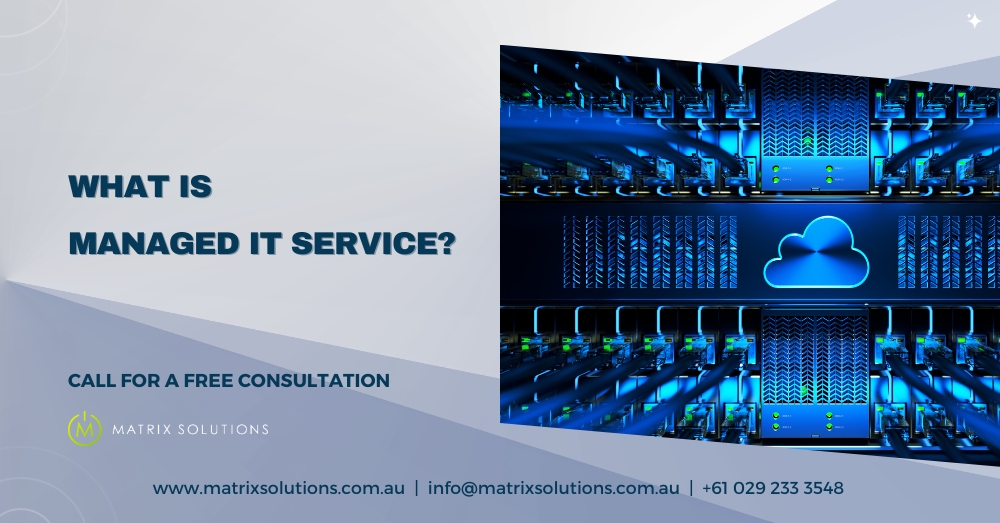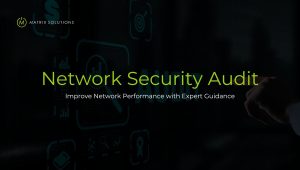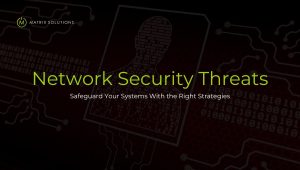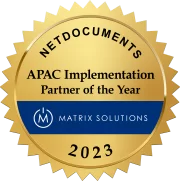In the dynamic world of technology, managing a company’s IT needs is complex, with software updates, cybersecurity, hardware issues, and network problems to address. Managed IT services refer to the practice of outsourcing the responsibility for maintaining, managing, and anticipating IT functions and processes to a third-party provider.
This comprehensive guide will answer the question of What is Managed IT Services and will explore IT Services’ basics, benefits, and best practices, demonstrating their potential to empower businesses. Whether you’re a business owner seeking cost-effective solutions or an IT professional looking to enhance your knowledge, discover how these services can streamline IT operations and maintain competitiveness. From basics to provider selection, we’ve got you covered. So, let’s dive in and discover the world of Managed IT Services together.
What is Managed IT Services?
Managed IT Services involve:
- Outsourcing IT infrastructure tasks to a third-party vendor.
- Reducing costs.
- Improving service quality.
- Enabling in-house staff to focus on core business tasks.
IT outsourcing companies can ease the burden on internal teams struggling to meet company IT demands. Managed IT services, including email, network monitoring, and cybersecurity, are available for your current infrastructure.
Small-medium businesses often need more time or expertise to manage computer, phone, network, and password issues. That’s where managed IT services, provided by MSPs, offer 24/7 comprehensive IT support. You’re familiar with managed services if your company uses Google Workspace, Adobe Creative Cloud, or Microsoft 365.
Key Elements of a Successful Managed IT Service
Successful Managed IT Services require efficient support with a responsive team to minimise downtime and ensure smooth operations. Remote IT Management prevents major issues, saving time and resources for uninterrupted business continuity.
Managed IT Security Services from trusted providers offer antivirus, firewalls, and security audits. Transparent managed IT service pricing maximises your IT budget for effective budgeting. A successful service combines IT consulting services and IT service delivery, aligning technology management with business goals for growth and success.
The Importance of Managed IT Services
Managed IT services are crucial for overseeing IT infrastructure cost-effectively, freeing businesses to focus on core functions without in-house IT teams. They ensure secure operations, scalability, disaster recovery, compliance guidance, vendor management, and access to cutting-edge technology while aligning IT strategies with broader business goals.
Evolution of Managed Services
Managed services have transformed from traditional IT outsourcing to proactive, cloud-based IT services with automation, robust security, and dedicated support. Evolving to meet diverse business needs in the dynamic digital environment, they now offer comprehensive, end-to-end ecosystem solutions for holistic IT management.
Who Needs Managed IT Services?
Managed IT services are valuable for organisations relying on technology. The services include network management, cybersecurity, cloud-based IT services, helpdesk support, data backup, and more. The specific needs of each organisation dictate the critical aspects of managed IT services that contribute to their success. Managed IT services benefit the following:
- Small and Medium-Sized Businesses (SMBs)
- Large Enterprises
- Insurance Companies
- Nonprofits and NGOs
- Healthcare Providers
- Educational Institutions
- Legal Firms
- Finance Services
- Retail and E-commerce
- Manufacturing and Industrial
- Government Organisations
- Startups
- Remote and Distributed Workforces
- Real Estates
- Compliance-driven Sectors
- Companies with limited IT Resources
Benefits of Managed IT Services
Managed IT Services offer businesses a proactive and strategic approach to address their technology requirements. This approach increases efficiency, reduces operational costs, and enhances productivity.
Experienced IT professionals manage routine tasks, maintenance, and cybersecurity, allowing businesses to focus on core objectives. This management enhances IT service scalability, reliability, and security in their IT infrastructure, streamlining operations and enabling swift adaptation in a dynamic digital landscape. Key benefits of managed services include:
Cost Savings and Predictable Expenses
Managed IT Services providers offer predictable monthly fees, simplifying budgeting for businesses. Outsourcing IT eliminates the need for in-house staff, reducing costs related to hardware and software, IT staff training, and retention.
Improved Focus on Core Business
Managed IT Services let you focus on your core business by entrusting IT management to experts. You no longer have to hire and manage an in-house IT team. This service saves time and resources, ensuring that experienced professionals handle your IT needs.
Enhanced Security and Compliance
Managed IT services provide:
- Enhanced security and compliance measures
- Safeguarding your business against cyber threats and ensuring adherence to industry regulations
- Giving you peace of mind and operational confidence
Scalability and Flexibility
Managed IT services offer businesses the advantage of scalability, allowing them to adjust their technology resources to meet changing needs easily. This flexibility ensures that companies can adapt to evolving demands while maintaining cost-efficiency.
Proactive IT Maintenance and Support
Managed IT services offer the advantage of proactive IT maintenance and support, ensuring systems run smoothly and issues are addressed before they disrupt operations. This proactive approach minimises downtime and maximises efficiency, empowering businesses to focus on their core goals.
Drawbacks of Managed IT Services
While Managed IT services offer numerous benefits, they have their fair share of drawbacks. We have outlined the potential liabilities and challenges of embracing managed IT services, helping you make wise decisions about your IT infrastructure management. Here are some of the major drawbacks of managed IT services:
Loss of Control
When you outsource your IT services, you must give up some control over your IT infrastructure and decision-making. Outsourcing can be a disadvantage if you prefer full control over your technology environment.
Security Concerns
Trusting a third-party provider to access your company’s sensitive data and IT systems can raise security concerns. It’s crucial to thoroughly check up on your managed IT service provider to ensure they have robust security measures.
Lack of Customisation
Managed IT service providers usually offer structured solutions that may need more customisation for your business needs. These solutions can limit your ability to customise your IT infrastructure to meet unique requirements.
Transition and Onboarding
Shifting from an in-house IT team to a managed service provider is complex and time-consuming. There will be challenges regarding smooth transition and effective onboarding.
Potential Communication Challenges
Clear communication is key for IT issue resolution and aligning technology with your business goals. Third-party providers may present communication challenges, so precisely articulating your needs is vital.
Costs Over Time
Over time, managed IT services can become expensive due to accumulating subscription costs and the risk of inflexible long-term contracts.
Deciding if Managed IT Services is Right for Your Business
Determining whether Managed IT Services are right for your business requires evaluating your current IT infrastructure and capabilities. If you face frequent IT issues or struggle with technical advancements, Managed IT Services may be the solution.
Managed IT Services benefit businesses of all sizes, with a particular benefit for small companies and start-ups that lack resources for an in-house IT team. Outsourcing provides access to experts without the added cost of staff and training.
Evaluate your IT budget. If you encounter unexpected IT expenses, try Managed IT Services for a fixed monthly fee to improve IT cost management and eliminate surprises. Consider your long-term business goals: expansion, process streamlining, or productivity improvement. Managed IT Services offer expertise and support to align your IT infrastructure with these objectives, fostering growth.
Types of Managed IT Services
Managed IT services have become indispensable for businesses, offering various solutions to streamline and secure technology operations. Let us explore some different types of managed IT services that will help you make intelligent choices for your organisation’s success.
Network Monitoring and Management
Managed Service Providers (MSPs) streamline network and system management, providing remote monitoring and management to enhance efficiency and proactively prevent issues. This optimisation boosts overall IT operations and productivity for organisations.
Data Backup and Disaster Recovery
Managed Service Providers (MSPs) are instrumental in securing and preserving an organisation’s data. They establish reliable backups to facilitate quick data recovery in the event of issues, enhancing data security and operational resilience.
Cybersecurity Services
Managed Service Providers (MSPs) are important in securing a company’s adaptability against cyber threats. Their multifaceted approach includes software updates, constant maintenance, and strong security management, all geared toward safeguarding the organisation’s digital infrastructure.
Cloud Services and Hosting
Managed IT services for cloud solutions and hosting comprise two crucial elements: Infrastructure as a Service (IaaS) oversees hardware and virtual resources. In contrast, Platform as a Service (PaaS) offers a comprehensive software development and deployment environment.
Help Desk and Technical Support
Managed IT services consist of two main components: Help Desk, which addresses daily user challenges, and Technical Support, dedicated to working complex technical issues for seamless operation of critical systems and infrastructure.
Vendor Management
Managed IT services involve vendor management, including procurement and overseeing technology suppliers. This service surrounds Supplier Relationship Management (SRM) for hardware and software vendors, ensuring seamless collaboration and optimal performance.
How to Choose a Managed IT Service Provider
Choosing the right Managed IT Service Provider is crucial for all businesses seeking to streamline their technology operations and enhance their overall efficiency. Numerous considerations and best practices will help you choose the right MSP that aligns with your organisation’s specific IT needs and goals. Here are some of the key considerations:
Assessing Your Business Needs
Get a thorough understanding of your business needs and goals. Identify areas where managed IT support services can enhance efficiency, security, or productivity.
Service Level Agreements (SLAs)
Examine the SLAs to clearly understand the service level and response times you can expect. Please make certain that they are to your business’s operational requirements.
Industry Experience and Expertise
Find a service provider with a demonstrated history of success and expertise in overseeing IT services, particularly within your specific industry.
Scalability and Growth
Prioritise those service providers that can scale their services as your business grows. Ensure they have a track record of adapting to the evolving technology needs so that your IT solutions can grow alongside your business.
Service Offerings
Assess the provider’s scope of services, such as managed network services, cybersecurity, cloud-based IT solutions, hardware assistance, and software management. Make sure that their services align with your specific requirements.
Data Backup and Recovery
Inquire about their data backup and recovery plans to guarantee the ability to restore your essential data in the event of data loss or disaster.
Costs and Pricing Structure
Get to know the provider’s pricing framework, taking into consideration any hidden or extra costs. Evaluate the managed IT services price with the quality of service and features offered.
Monitoring and Reporting
Inquire about their proactive monitoring solutions and reporting functionalities. Consistent monitoring can help identify and resolve issues without interrupting operations.
Security
Prioritise cybersecurity as a top concern. Ensure the provider has implemented strong security measures and protocols to protect your data and systems. Inquire about their incident response strategy.
Support and Help Desk
Assess the provider’s support and help desk capabilities, ensuring they deliver prompt and efficient assistance for resolving issues and responding to inquiries.
Compliance and Regulations
If your company functions in a regulated sector, ensure that the provider understands and adheres to the specific regulations and standards applicable to that industry.
Communication and Collaboration Tools
Ensure the provider can accommodate and seamlessly incorporate the communication and collaboration tools essential for your business operations.
Implementing Managed IT Services
Implementing Managed IT Services requires ongoing IT support, including network monitoring, cybersecurity, software updates, and responsive helpdesk support. Successfully integrating these services into your organisation involves careful preparation and flawless execution. Here’s a step-by-step roadmap to help you implement managed IT services:
Business Plan and Strategy
Define your business objectives and target market, and outline the services you plan to provide. Formulate a strong plan for efficiently delivering these services and being different from competitors.
Infrastructure Setup, Staffing, and Training
Build a strong IT foundation. Implement necessary tools for client network management. Hire skilled professionals and provide ongoing training on the latest technologies and IT service best practices.
Pricing and Contracts
Set your pricing model (monthly subscriptions, per-user fees, or per-device charges) and create consistent service level agreements (SLAs), IT service agreements, and contracts defining customer services and terms.
Marketing and Sales
Create a marketing strategy to connect with your target audience. This strategy may involve website creation, online marketing, event participation, and collaborating with other businesses. Ensure your sales team can effectively communicate your service’s value.
Client Onboarding
Upon gaining a new client, commence with an initial evaluation of their IT infrastructure, comprehending their unique requirements and goals. Subsequently, proceed to install monitoring tools and enforce security measures.
Ongoing Monitoring and Maintenance
Monitor clients’ IT systems regularly to detect and address issues before they become critical. Perform routine maintenance tasks like software updates, security patching, and system optimisation.
Reporting and Communication
Deliver consistent updates to your clients regarding well-being and efficiency of their IT systems while upholding transparent and accessible communication channels.
Continuous Improvement
Continuously evaluate and enhance your IT service delivery by staying current with industry trends, technological advancements, and customer input to fine-tune your offerings.
Scaling and Growth
As your customer base expands, ensure you scale up your operations accordingly. Explore the possibility of broadening your range of services or venturing into new markets.
Compliance and Security Audits
Regularly review your security and compliance protocols to confirm alignment with industry standards and regulatory mandates.
Client Relationship Management
Build enduring partnerships with your clientele through a deep comprehension of their business requirements while tailoring your IT solutions to bolster their expansion.
Risks and Challenges
Managed IT services offer several advantages but come with their own set of risks and challenges. To address these, choose a reliable provider, establish a comprehensive SLA, and monitor their performance. Regularly adapt your IT strategy to align with business objectives. Key risks and challenges include:
Vendor Lock-In
Shifting between MSPs or bringing IT services in-house can be complex and costly. Managed IT services offer efficiency but come with the risk of vendor lock-in, limiting flexibility and raising long-term costs. Organisations must choose carefully to avoid overdependence on one provider.
Service Interruptions and Downtime
Managed IT services, valuable yet prone to disruptions from technical issues or external threats, can harm productivity and customer satisfaction. Inadequate SLA response times may also be a concern. Mitigate these risks with robust contingency plans and proactive monitoring for uninterrupted business operations.
Hidden Costs
Some MSPs feature intricate pricing models, potentially causing unexpected costs and service overlaps with your in-house IT resources, leading to inefficiencies. Selecting an MSP with transparent pricing is essential for cost control and operational efficiency.
Lack of Control
Outsourcing IT services involves surrendering a portion of your authority over your IT infrastructure and decision-making, which may pose a challenge for companies prioritising maintaining a high control level.
Communication and Accountability
Open and clear communication between your organisation and the Managed Service Provider (MSP) is paramount. Misunderstandings or a lack of transparency can result in issues with IT service delivery.
Pricing Model for Managed Service Providers
Managed service providers (MSPs) offer various pricing models to meet client needs. Clients should assess them based on business objectives, budget, and required services, considering 24/7 support, security, and extra costs. Clear communication and understanding of pricing terms are essential for a successful MSP partnership. Common Managed Service IT pricing models include:
Flat-Rate Pricing
Clients pay a fixed monthly fee for set services, regardless of usage, ensuring cost predictability and flexibility.
Per-Device Pricing
In this model, clients are charged per managed device (e.g., servers, workstations, smartphones), ideal for organisations with a defined device inventory.
Per-User Pricing
Clients are charged per user for MSP services, especially for helpdesk support and email management, where user count is prioritised over device count.
Tiered Pricing
MSPs may offer different service packages with varying levels of support and features. Clients can choose the package that aligns with their needs and budget. Pricing is tiered based on the selected service level.
A La Carte Pricing
Certain MSPs provide various services, allowing clients to select and pay for individual services as required. While this offers flexibility, it may be less cost-effective for complete support.
Usage-Based Pricing
MSPs may bill for services like cloud computing and data storage based on factors like data transfer, storage capacity, and active virtual machines.
Value-Based Pricing
This model emphasises client value and determines pricing based on specific outcomes, like system performance improvements, reduced downtime, and cost savings, often using a collaborative pricing approach.
Profit-Sharing Models
MSPs sometimes use a pricing model where they share a percentage of the cost savings or revenue increase they assist clients in achieving, aligning their incentives with the client’s business success.
Bundled Pricing
MSPs often combine services into a single package and charge a unified fee, streamlining billing and enhancing IT cost management for clients.
Customised Pricing
For complex or unique client requirements, MSPs may develop customised pricing models tailored to the specific needs and goals of the client.
Future Trends in Managed IT Services
Managed IT services are essential for business success and provide reliable and cost-effective tech solutions. Emerging trends create opportunities and challenges, emphasising the importance of proactive engagement. Here, we’ll examine three key trends shaping the sector’s future:
Artificial Intelligence and Automation
AI and automation revolutionise IT service management, predicting and solving problems, reducing downtime, improving reliability for managed service providers, and increasing efficiency and productivity.
Edge Computing and Internet of Things (IoT) Integration
IoT and edge computing transform IT services by enabling real-time analysis, quicker responses, and enhanced security. Managed IT service providers prioritise edge computing for smooth IoT integration, especially in manufacturing, healthcare, and smart cities.
Evolving Cybersecurity Threats
In the ever-changing cybersecurity landscape, managed IT providers enhance protection through advanced threat detection, monitoring, and rapid response, addressing the complexities of remote work and cloud-based IT services.
Conclusion
Selecting the appropriate managed IT service provider is crucial for securing your business’s online success. The provider’s experience, reputation, and service offerings should be carefully considered when making this critical decision. Choose a provider with the expertise and resources to meet your unique business needs and objectives.
Managed IT services are crucial for streamlining technology maintenance and enhancing security in today’s corporate world. Partnering with a reliable web hosting provider is key as your digital transformation progresses. With Matrix Solutions, you are choosing the right managed IT service provider that simplifies operations and fuels your business growth. Contact us today for a free consultation.
Ready to Transform Your Business with Managed IT Services?
Discover the Key to Efficiency and Success With Matrix Solutions’ Managed IT Services.
FAQs on What are Managed IT Services
How can Managed IT Services benefit small businesses?
Managed IT services for small businesses give cost-effective access to expert IT support, ensuring smooth technology management. It allows them to focus on core operations and growth while reducing downtime and improving security.
How can I determine if Managed IT Services are right for my business?
Consider Managed IT Services to reduce IT costs and ensure reliable, proactive IT support for your business, especially if you lack in-house expertise. Evaluate your specific needs and budget to make an informed decision.
How much should a Managed IT Service Provider cost?
An MSP’s expenses should be lower than the costs of establishing an in-house capability. When assessing the in-house team setup costs, factor in the initial fixed expenditures for recruitment and tool acquisition and ongoing expenses related to employee compensation and engagement.
What types of businesses can benefit from managed IT services?
Small startups and large enterprises can benefit from managed IT services. The service provides cost-effective, expert support for their technology infrastructure, allowing them to focus on core operations and ensure data security and efficiency.
What services are typically included in a managed IT services package?
Managed IT services packages typically include:
- Remote monitoring and management
- Proactive maintenance
- Cybersecurity
- Helpdesk support
- Cloud infrastructure management
How does managed IT differ from traditional IT support?
Managed IT involves proactive, ongoing monitoring and maintenance of a company’s IT systems, while traditional IT support typically provides reactive, on-demand assistance when issues arise. Managed IT aims to prevent problems, while traditional IT support services focus on resolving them after they occur.
What should I look for in a managed IT service provider?
When choosing a managed IT service provider, prioritise their expertise in your industry and technology stack and their track record in delivering reliable and responsive support.
How do managed services work?
In business outsourcing, MSPs use SaaS to manage operations efficiently, granting users the needed permissions for in-house-like application usage, enhancing productivity and cost-effectiveness.







